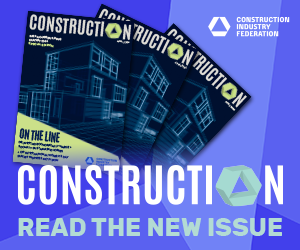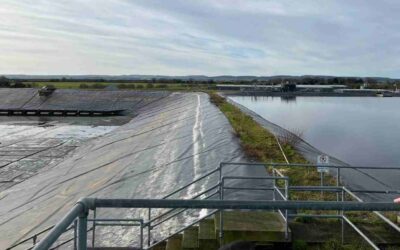Events over the previous 12 months have been a catalyst for several disruptive trends in the real estate sector. A report from Deloitte Ireland reviews the real estate planning and development in Q1 from an industry perspective. David Reddy, Associate Director in the Real Estate Financial Advisory team, considers the current residential landscape in Ireland

David Reddy
Demands for different forms of living
In terms of the make up of the Irish residential market, there has been an increasing shift in recent decades from the historical owner-occupier purchaser profile to the more “European” apartment rental market model. Due to the demands for different forms of living amongst a more dynamic demographic, this type of rental model which has become dominant in recent years in Dublin, is also now more prevalent in cities such Galway, Limerick and Cork.
But, predominantly as a result of the Covid-19 pandemic and more flexible working arrangements, research indicates a notable shift in planning applications for the delivery of housing units, rather than apartment developments in Q1 of this year, in comparison to the same period in 2020.
The underlying issue of the shift in purchaser/occupier demand has become more evident. Where purchasers previously sought an apartment or a two/three bedroom house, they will now require three/four bedroom houses in alternative locations; for example to include a study or home office.
As people spend more time at home, this amenity space, to include gardens/open space, local neighbourhood facilities and amenities, become more critical. The availability of readily accessible transport routes must also be considered in the unit mix at the design stages, with different requirements for various demographic profiles.
These trends have been translated into the lodgement of a larger number of commencement notices for residential developments outside of Dublin, with lower density schemes more synonymous with these locations.
Rising costs impacting supply
Due to a shortage of supply most recently as a result of the disruption of supply chains following Brexit and the ongoing Covid-19 pandemic, one of the major issues construction companies are now facing is rising costs in materials with no immediate slowdown in growth anticipated in the coming years.
Contractors are also experiencing labour supply problems, with an increase in the demand for labour. This overall increase in demand for labour is further driving cost increases. The resultant impact is that for a wide number of schemes, viability is becoming an issue – as costs rise, the margins become tighter.
Our analysis reviewed schemes of 20 units and above, which indicates a huge deficit of housing in terms of delivery. Of the 34,000 units required to meet demand, approximately 15,000 units are on target for delivery in the full year of 2021 – there will be a knock-on effect on demand over the coming years.
As the demand for housing increases, this is likely to drive up construction costs even more. The longer these projects are marginal, the less new stock that is likely to be developed which further increases the demand/supply gap.
In terms of units submitted, the number of planning applications was down 29 per cent during the period Q1 2021 in comparison to Q1 2020. This is most likely a direct implication from the restrictions imposed over the first quarter of 2021. This trend is amplified further down the development timeline with granted schemes down 26 per cent and commencement notices lodged down 44 per cent
Some broader factors impacting the planning system is the ongoing issues with the Strategic Housing Development (SHD) system, which is to be terminated and replaced in the coming months. The recent rise in the number of Judicial Reviews has resulted in many schemes being substantially delayed or quashed entirely in the courts.
Technology transformation
Finally, whilst there are a variety of disruptors in the residential market, it is envisioned that technology will play an essential role in the planning, design, construction, and overall delivery of housing.
Technology is having an impact, from site acquisition, surveys and planning strategy, to the design and disposal of schemes. The planning process is becoming more streamlined, developers and house builders have access to higher quality content, more detailed and complex schematics, and visuals from a design perspective.
These technological advances will also have a positive impact on the sustainable design of housing. Ultimately this will result in longer term value retention and cost savings for occupiers and end users.
The continued developments in technology will provide design efficiencies from a construction standpoint, allowing for modular builds offsite. In time, this will substantially improve speed of delivery and reduce costs.
Albeit there are limitations at present in the Irish market until this process becomes more accessible and financially viable. In a rapidly changing and dynamic residential market, it is fundamental that residential developers surround themselves with an adept and proficient design team.
Deloitte Ireland Real Estate Planning & Development Statistics – Q1 Industry Review
- The number of units submitted for planning in Q1, 2021 is down 29 per cent compared to the same period in 2020.
- 87 per cent of contractors expressed that they had experienced longer lead times for materials.
- For residential units, the ability to deliver on schemes has been challenging with the number of commencements almost half that of the same period in 2020.
Residential Market Outlook
Forward purchase investments of residential stock are now prevalent in the residential market, having stagnated over the previous year. This is likely due to a return of certainty over the construction and scheme completion timeframes.
This forward purchase by investment funds received negative reaction in Government circles as it reduces the available capacity for first time buyers, leading the Government to introduce a 10 per cent stamp duty rate on purchases of 10 or more houses within a 12 month period in a bid to curb this trend.
Apartments are fully exempt from this higher stamp duty, as are multiple purchases by Local Authorities and Approved Housing Bodies. The establishment of the shared equity scheme, where further support is provided for first time buyers, will have implications for the housing market.
These implications remain to be seen both from a supply and demand perspective, and will provide a degree of uncertainty for the private developer and councils as they assess their social housing needs.








